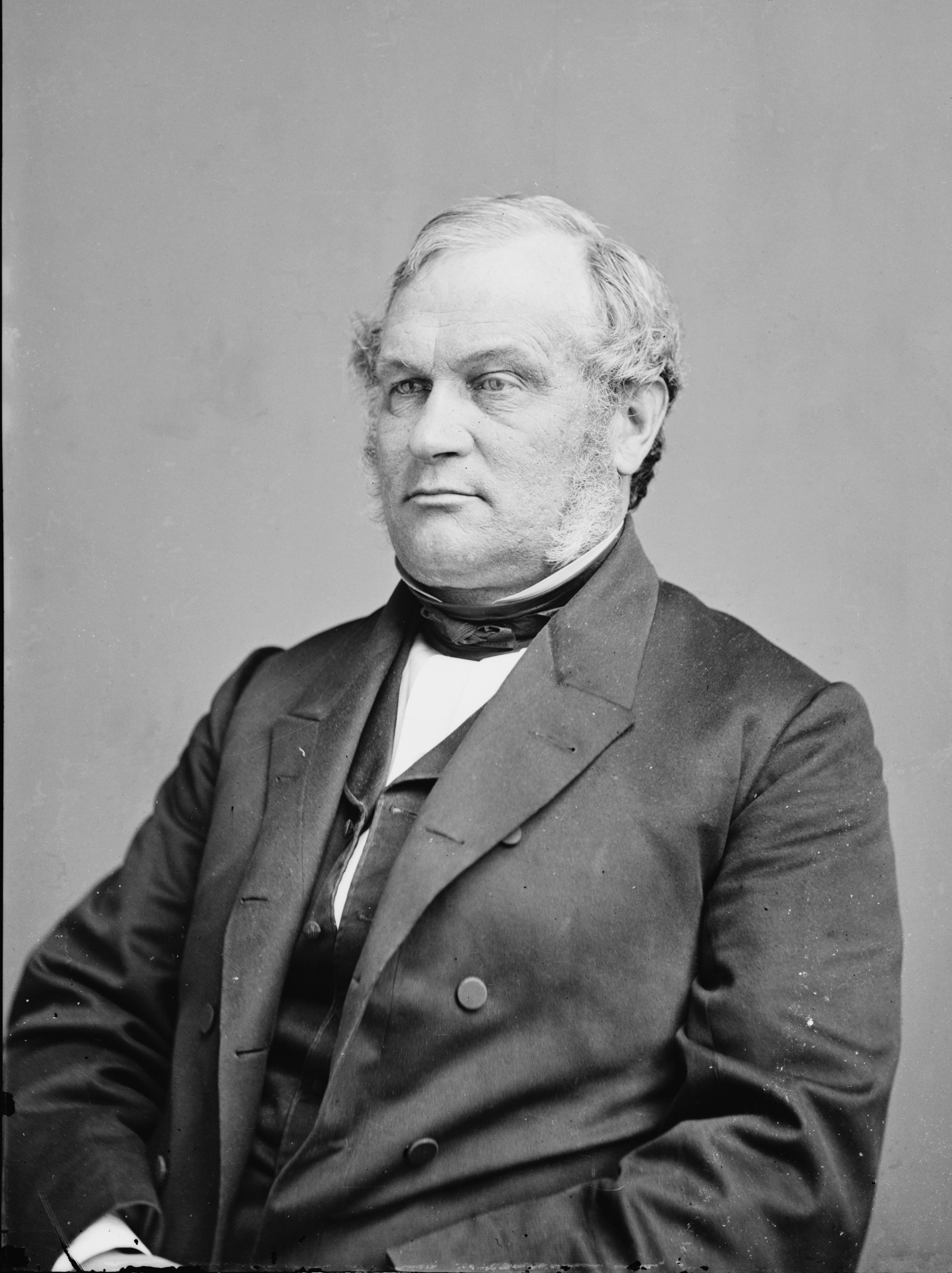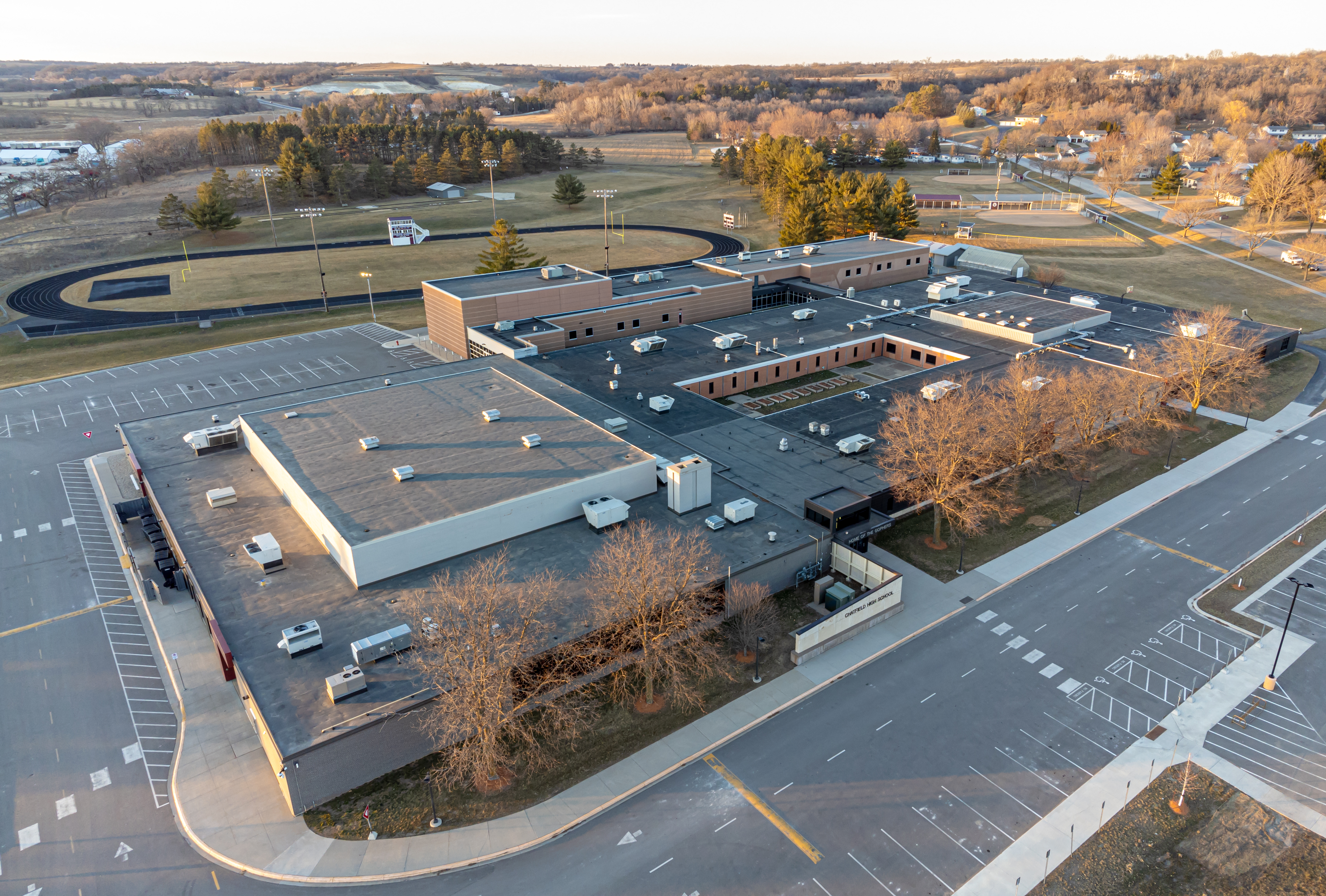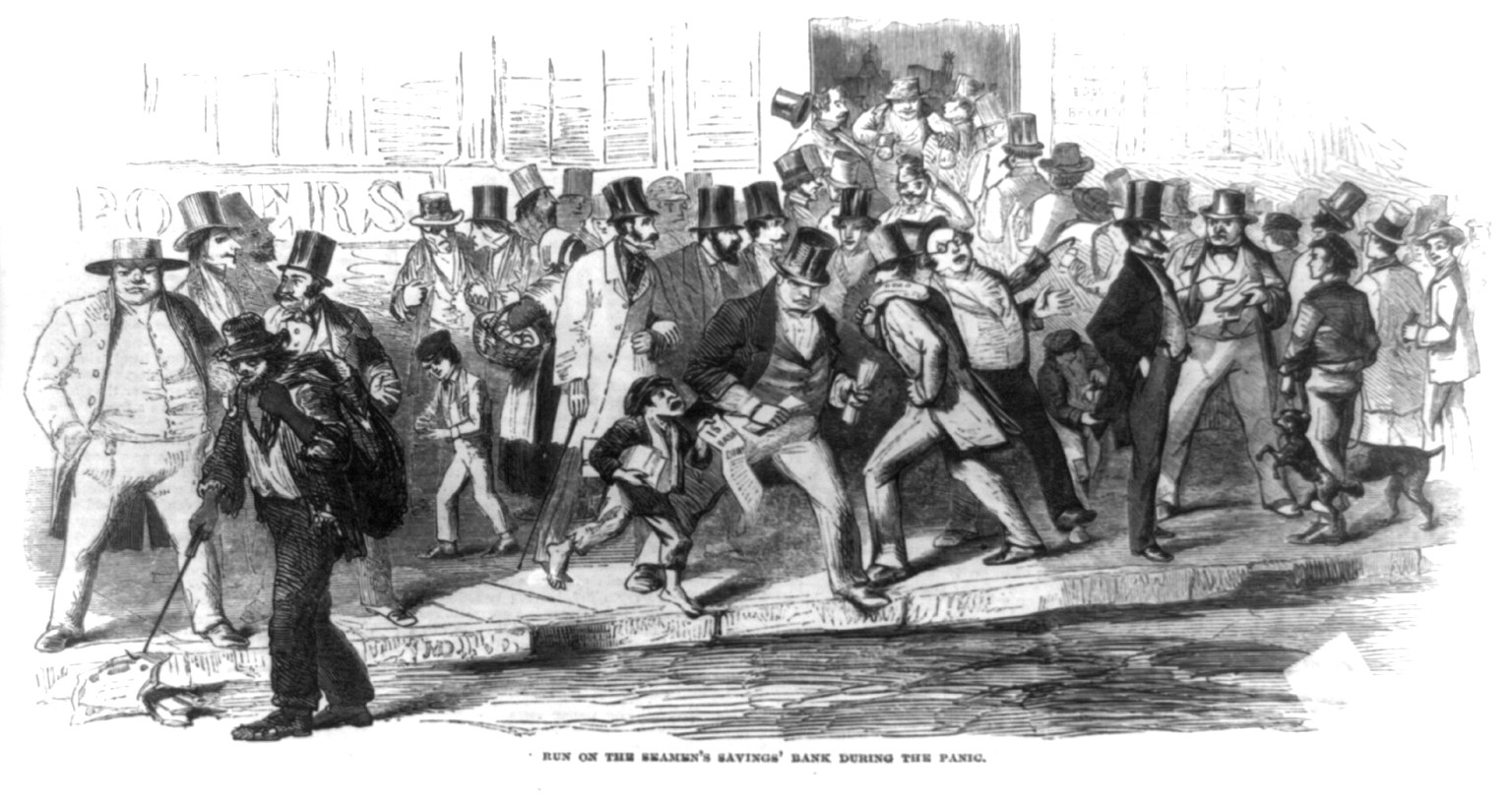|
Lenora Methodist Episcopal Church
Lenora Methodist Episcopal Church is a historic church in Lenora, Minnesota, United States, an unincorporated community in Canton Township, Fillmore County. It was added to the National Register of Historic Places in 1982. History The Minnesota conference of Methodism was organized in 1845, well before Minnesota became a territory in 1849. The Reverend Benjamin Crist started visiting the Lenora area as a missionary on a circuit between Chatfield and Brownsville in 1854. In 1856 Elder John L. Dyer officially organized the congregation. He donated of land and began construction of a stone building, financed by the sale of lots in the town of Lenora. The Panic of 1857 thwarted the development of the area, though, and many pioneer families moved back east. Dyer left the community and moved to Colorado, where he acquired the nickname "Snowshoe Preacher". Construction on the church was stalled for the next eight years, with half-completed stone walls. In 1865 the area was ... [...More Info...] [...Related Items...] OR: [Wikipedia] [Google] [Baidu] |
Canton, Minnesota
Canton is a city in Fillmore County, Minnesota, United States. The population was 346 at the 2010 census. History A post office called Canton has been in operation since 1882. Canton was incorporated in 1887. The city was named after Canton, Ohio. The city was previously served by passenger rail at Canton station. Geography According to the United States Census Bureau, the city has a total area of , all land. Canton is along U.S. Highway 52 and Fillmore County Road 21, Main Street. It is five miles east-southeast of Harmony, and nine miles west of Mabel. Demographics 2010 census As of the census of 2010, there were 346 people, 162 households, and 88 families living in the city. The population density was . There were 177 housing units at an average density of . The racial makeup of the city was 99.7% White and 0.3% from two or more races. Hispanic or Latino of any race were 0.6% of the population. There were 162 households, of which 25.3% had children under the age ... [...More Info...] [...Related Items...] OR: [Wikipedia] [Google] [Baidu] |
Lenora, Minnesota
Lenora is an unincorporated community in Fillmore County, in the U.S. state of Minnesota Minnesota ( ) is a U.S. state, state in the Upper Midwestern region of the United States. It is bordered by the Canadian provinces of Manitoba and Ontario to the north and east and by the U.S. states of Wisconsin to the east, Iowa to the so .... History Lenora was laid out in 1855. A post office was established at Lenora in 1856, and remained in operation until it was discontinued in 1905. References Unincorporated communities in Fillmore County, Minnesota Unincorporated communities in Minnesota {{FillmoreCountyMN-geo-stub ... [...More Info...] [...Related Items...] OR: [Wikipedia] [Google] [Baidu] |
Canton Township, Fillmore County, Minnesota
Canton Township is a township in Fillmore County, Minnesota, United States. The population was 684 at the 2000 census. History Canton Township was organized in 1858, and named after Canton, Ohio. Geography According to the United States Census Bureau, the township has a total area of , all land. Demographics As of the census of 2000, there were 684 people, 184 households, and 149 families residing in the township. The population density was . There were 205 housing units at an average density of . The racial makeup of the township was 97.51% White, 0.15% African American, 0.15% Asian, and 2.19% from two or more races. Hispanic or Latino of any race were 1.90% of the population. There were 184 households, out of which 47.3% had children under the age of 18 living with them, 74.5% were married couples living together, 6.0% had a female householder with no husband present, and 18.5% were non-families. 15.8% of all households were made up of individuals, and 8.2% had someone li ... [...More Info...] [...Related Items...] OR: [Wikipedia] [Google] [Baidu] |
National Register Of Historic Places
The National Register of Historic Places (NRHP) is the Federal government of the United States, United States federal government's official United States National Register of Historic Places listings, list of sites, buildings, structures, Historic districts in the United States, districts, and objects deemed worthy of Historic preservation, preservation for their historical significance or "great artistic value". The enactment of the National Historic Preservation Act (NHPA) in 1966 established the National Register and the process for adding properties to it. Of the more than one and a half million properties on the National Register, 95,000 are listed individually. The remainder are contributing property, contributing resources within historic district (United States), historic districts. For the most of its history, the National Register has been administered by the National Park Service (NPS), an agency within the United States Department of the Interior. Its goals are to ... [...More Info...] [...Related Items...] OR: [Wikipedia] [Google] [Baidu] |
Methodism
Methodism, also called the Methodist movement, is a Protestant Christianity, Christian Christian tradition, tradition whose origins, doctrine and practice derive from the life and teachings of John Wesley. George Whitefield and John's brother Charles Wesley were also significant early leaders in the movement. They were named ''Methodists'' for "the methodical way in which they carried out their Christian faith". Methodism originated as a Christian revival, revival movement within Anglicanism with roots in the Church of England in the 18th century and became a separate denomination after Wesley's death. The movement spread throughout the British Empire, the United States and beyond because of vigorous Christian mission, missionary work, and today has about 80 million adherents worldwide. Most List of Methodist denominations, Methodist denominations are members of the World Methodist Council. Wesleyan theology, which is upheld by the Methodist denominations, focuses on Sanc ... [...More Info...] [...Related Items...] OR: [Wikipedia] [Google] [Baidu] |
Minnesota Territory
The Territory of Minnesota was an organized incorporated territory of the United States that existed from March 3, 1849, until May 11, 1858, when the eastern portion of the territory was admitted to the Union as the state of Minnesota and the western portion became unorganized territory and shortly after was reorganized as part of the Dakota Territory. History The Minnesota Territory was formed on March 3, 1849, encompassing the entirety of the present-day state of Minnesota and the majority portions of modern-day North and South Dakota east of the Missouri and White Earth Rivers. At the time of formation there were an estimated 5,000 settlers living in the Territory. There were no roads from adjoining Wisconsin or Iowa. The easiest access to the region was via waterway, of which the Mississippi River was primary. The primary mode of transport was the riverboat. Minnesota Territory had three significant pioneer settlements: St. Paul, St. Anthony/Minneapolis, and Stil ... [...More Info...] [...Related Items...] OR: [Wikipedia] [Google] [Baidu] |
Chatfield, Minnesota
Chatfield is a city in Fillmore and Olmsted counties in the U.S. state of Minnesota. The population was 2,997 at the 2020 census. The city's area is split almost equally between the two counties. Chatfield is known as "The Gateway to Bluff Country" and "The Chosen Valley". History The city was named after Judge Andrew G. Chatfield. It was founded in 1853 by Andrew Twiford, and originally served as the Fillmore county seat prior to the county being further divided. The founding population was overwhelmingly from New England. The New Englanders who founded Chatfield built a community that became so successful it was dubbed "the Chosen Valley". During the American Civil War, the Chatfield Guards militia distinguished themselves as Company A of the 2nd Minnesota Volunteer Infantry, and their commander, former engineer and newspaperman Captain (later promoted to colonel) Judson W. Bishop, later commanded the entire regiment. Geography According to the United States Census Bure ... [...More Info...] [...Related Items...] OR: [Wikipedia] [Google] [Baidu] |
Brownsville, Minnesota
Brownsville is a city in Houston County, Minnesota, Houston County, Minnesota, United States. The population was 566 at the 2020 United States census, 2020 census. History A post office called Brownsville has been in operation since 1852. Brownsville was platted in 1854 by the brothers Job and Charles Brown, and named for them. The village of Brownsville was destroyed by fire in October 1920. The loss was reported to be worth $75,000. The rail depot and eight other buildings were destroyed. The weekly ''Brownsville News'' newspaper, established in June 1885, ceased publication in October 1920. It was issued with the ''Houston County Chief'' from November 1920 to April 1927 and with the ''Hokah Chief'' from April to July 1927. Geography According to the United States Census Bureau, the city has a total area of , of which is land and is water. Minnesota State Highway 26 and County Road 3 (Main Street) are two of the main routes in the community. Demographics 2010 census A ... [...More Info...] [...Related Items...] OR: [Wikipedia] [Google] [Baidu] |
Panic Of 1857
The Panic of 1857 was a financial crisis in the United States caused by the declining international economy and over-expansion of the domestic economy. Because of the invention of the telegraph Telegraphy is the long-distance transmission of messages where the sender uses symbolic codes, known to the recipient, rather than a physical exchange of an object bearing the message. Thus flag semaphore is a method of telegraphy, whereas ... by Samuel F. Morse in 1844, the Panic of 1857 was the first financial crisis to spread rapidly throughout the United States. The world economy was more interconnected by the 1850s, which made the Panic of 1857 the first worldwide economic crisis. In Britain, the Henry John Temple, 3rd Viscount Palmerston, Palmerston government circumvented the requirements of the Bank Charter Act 1844, which required gold and silver reserves to back up the amount of money in circulation. Surfacing news of this circumvention set off the Panic in Britain. B ... [...More Info...] [...Related Items...] OR: [Wikipedia] [Google] [Baidu] |
Newburg Township, Fillmore County, Minnesota
Newburg Township is a township in Fillmore County, Minnesota, United States. The population was 444 at the 2000 census. Newburg Township was organized in 1858, and named after the community of Newburg. Geography According to the United States Census Bureau, the township has a total area of 35.4 square miles (91.7 km), all land. Demographics As of the census of 2000, there were 444 people, 175 households, and 119 families residing in the township. The population density was 12.5 people per square mile (4.8/km). There were 192 housing units at an average density of 5.4/sq mi (2.1/km). The racial makeup of the township was 99.32% White, 0.23% Asian, and 0.45% from two or more races. Hispanic or Latino of any race were 0.23% of the population. There were 175 households, out of which 29.7% had children under the age of 18 living with them, 62.9% were married couples living together, 3.4% had a female householder with no husband present, and 32.0% were non-famil ... [...More Info...] [...Related Items...] OR: [Wikipedia] [Google] [Baidu] |
Pump Organ
The pump organ or reed organ is a type of organ that uses free reed aerophone, free reeds to generate sound, with air passing over vibrating thin metal strips mounted in a frame. Types include the pressure-based harmonium, the suction reed organ (which employs a vacuum system), and the Indian harmonium. Historical examples include the ''Kunstharmonium'' and the American reed organ, while earlier forms include the physharmonica and the Seraphine (instrument), seraphine. More portable than pipe organs, free-reed organs became widespread in smaller churches and private homes during the 19th century, although their volume and tonal range were limited. They generally featured one, or occasionally two, Manual (music), manuals, while pedal keyboard, pedal-boards were rare. Higher-end pump organs offered a broader range of tones, and models intended for churches or affluent households were often housed in finely crafted Cabinet (furniture), cabinets. Between the 1850s and the 1920s, se ... [...More Info...] [...Related Items...] OR: [Wikipedia] [Google] [Baidu] |
Churches Completed In 1856
Church may refer to: Religion * Church (building), a place/building for Christian religious activities and praying * Church (congregation), a local congregation of a Christian denomination * Church service, a formalized period of Christian communal worship * Christian denomination, a Christian organization with distinct doctrine and practice * Christian Church, either the collective body of all Christian believers, or early Christianity Places United Kingdom * Church, a former electoral ward of Kensington and Chelsea London Borough Council that existed from 1964 to 2002 * Church (Liverpool ward), a Liverpool City Council ward * Church (Reading ward), a Reading Borough Council ward * Church (Sefton ward), a Metropolitan Borough of Sefton ward * Church, Lancashire, England United States * Church, Iowa, an unincorporated community * Church Lake, a lake in Minnesota * Church, Michigan, ghost town Arts, entertainment, and media * '' Church magazine'', a pastoral theology mag ... [...More Info...] [...Related Items...] OR: [Wikipedia] [Google] [Baidu] |





